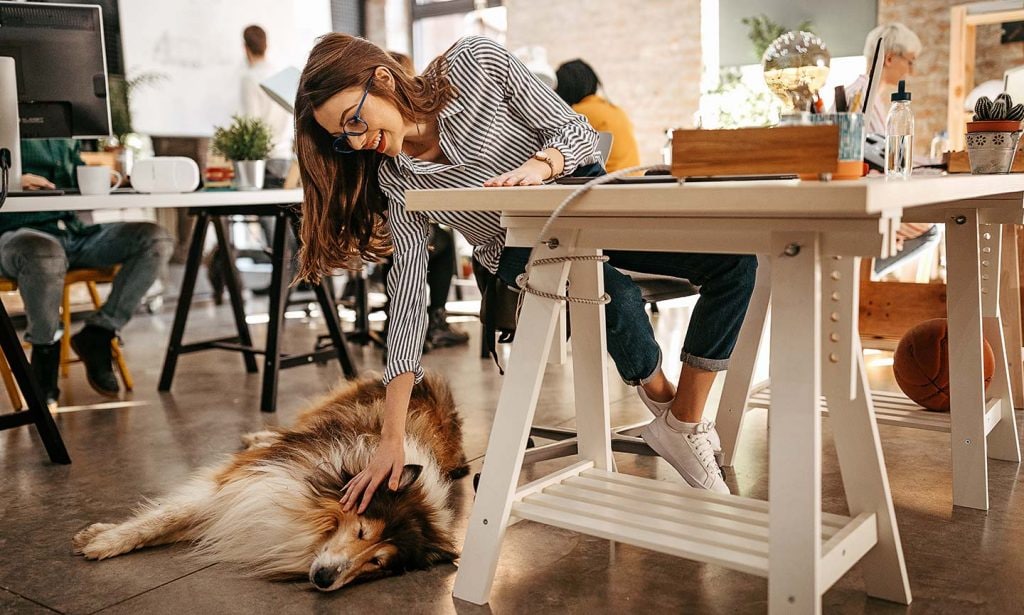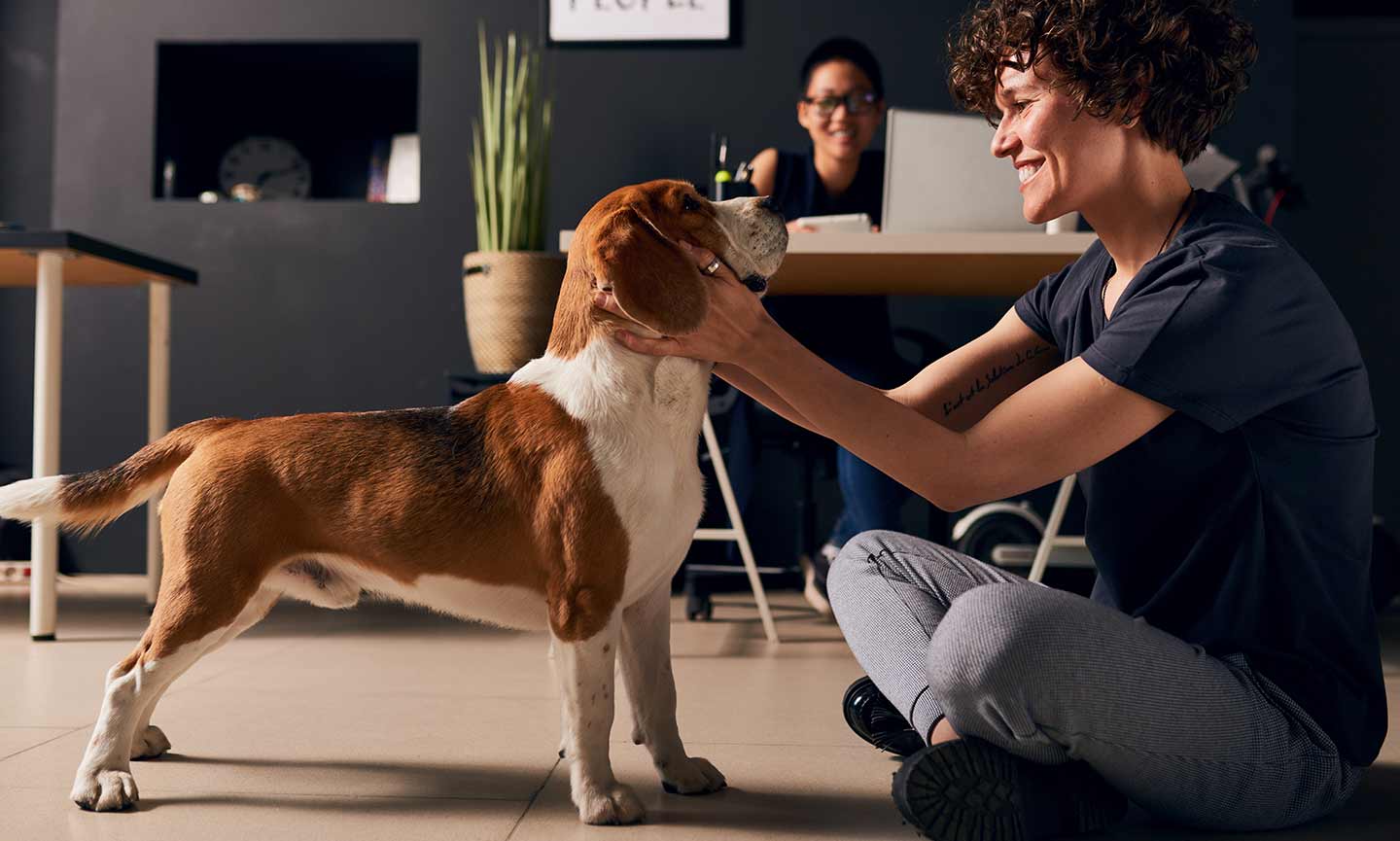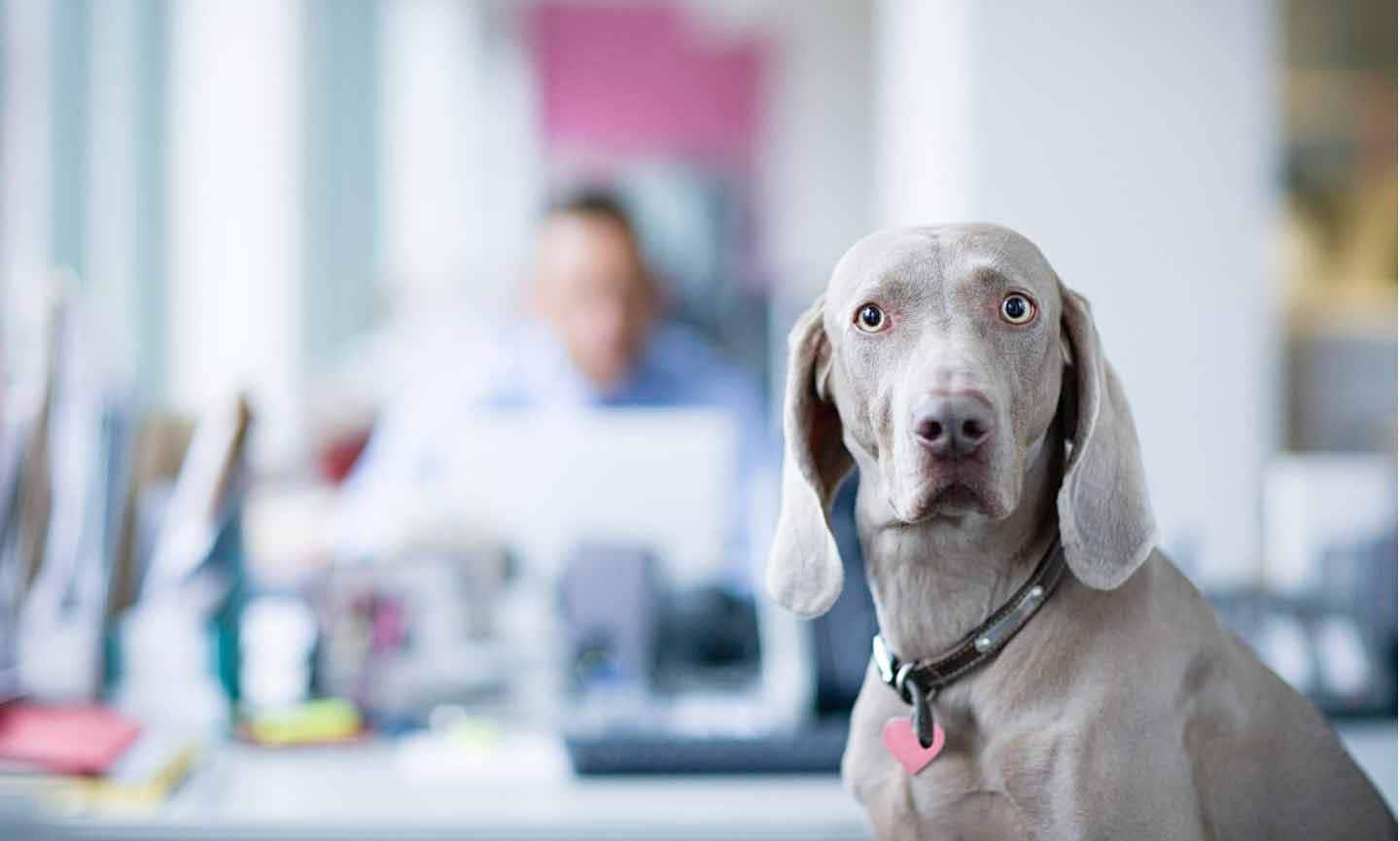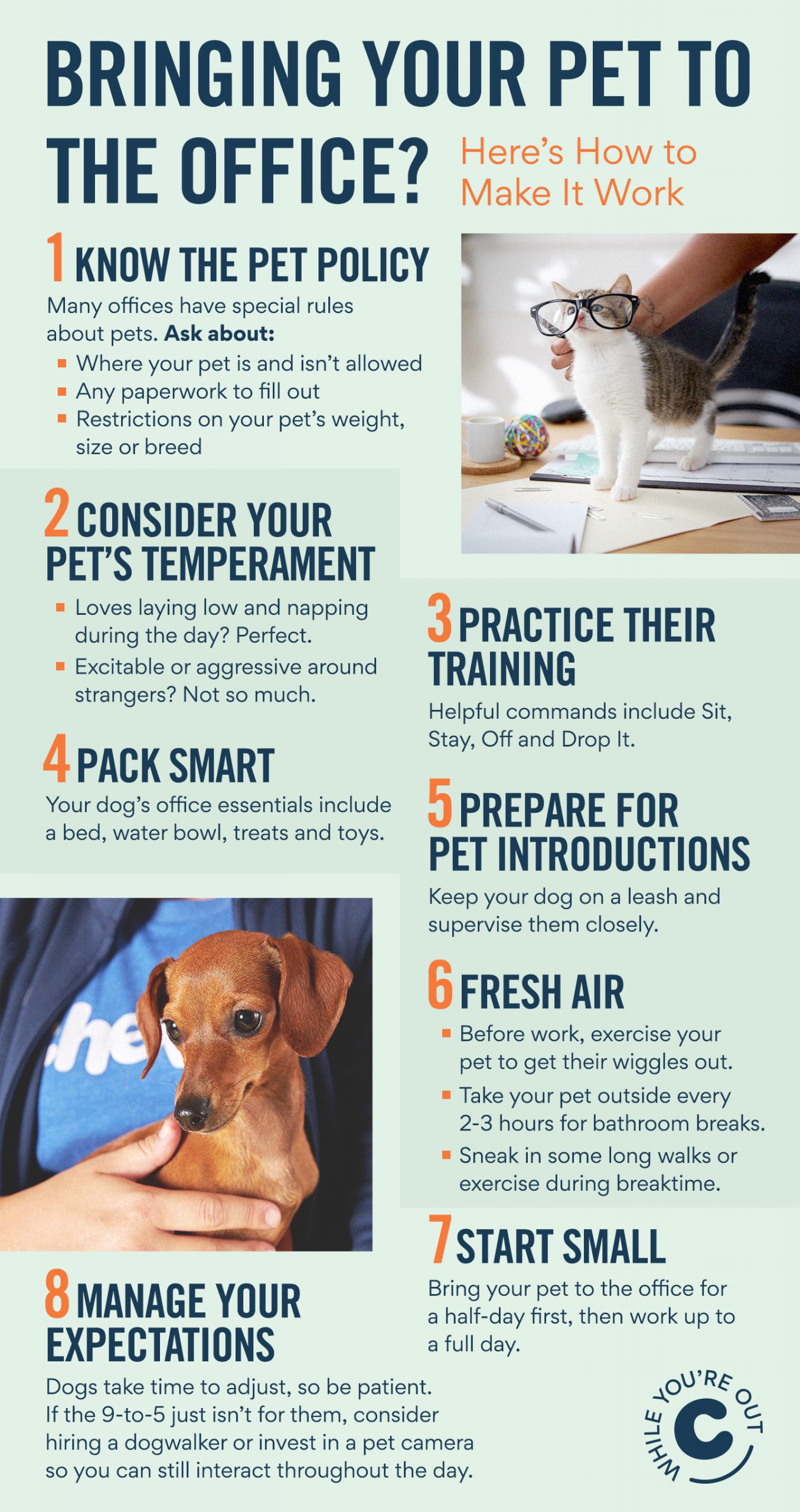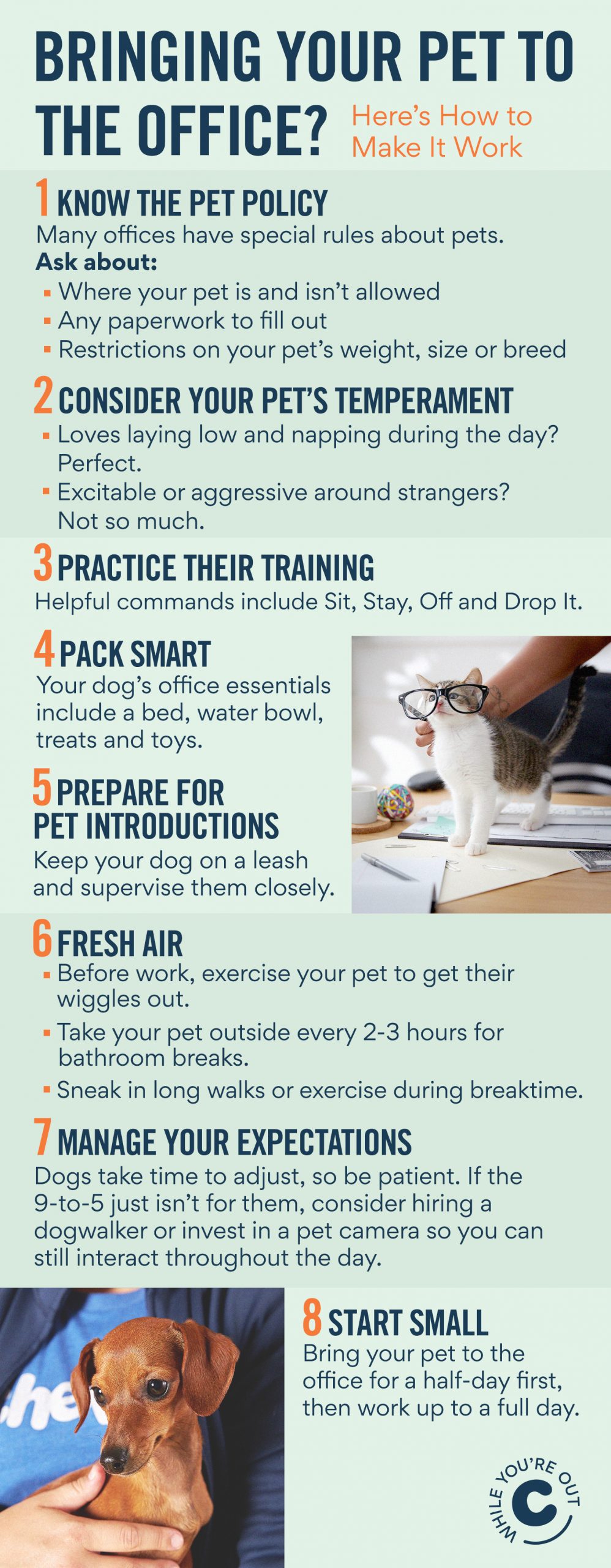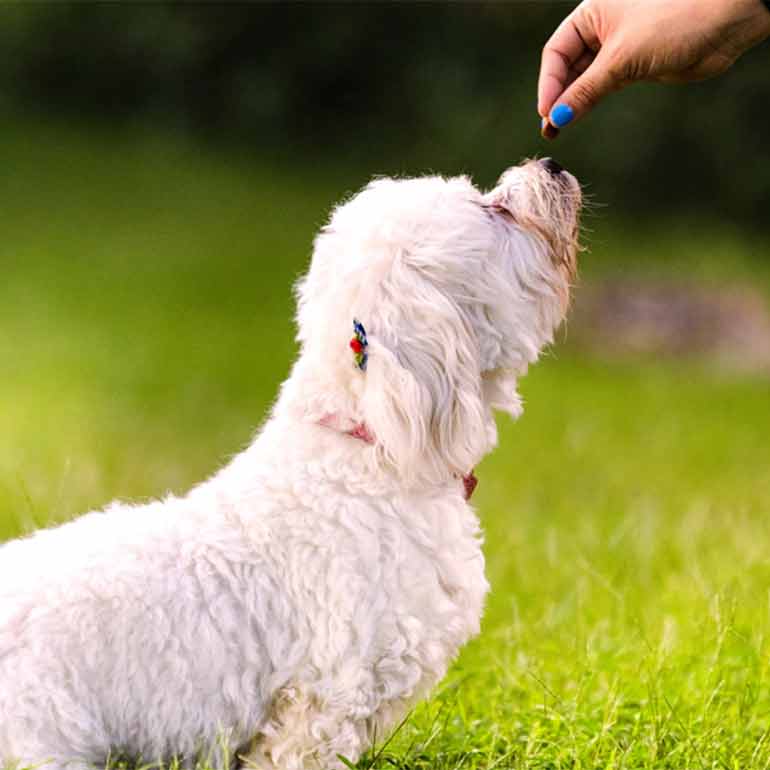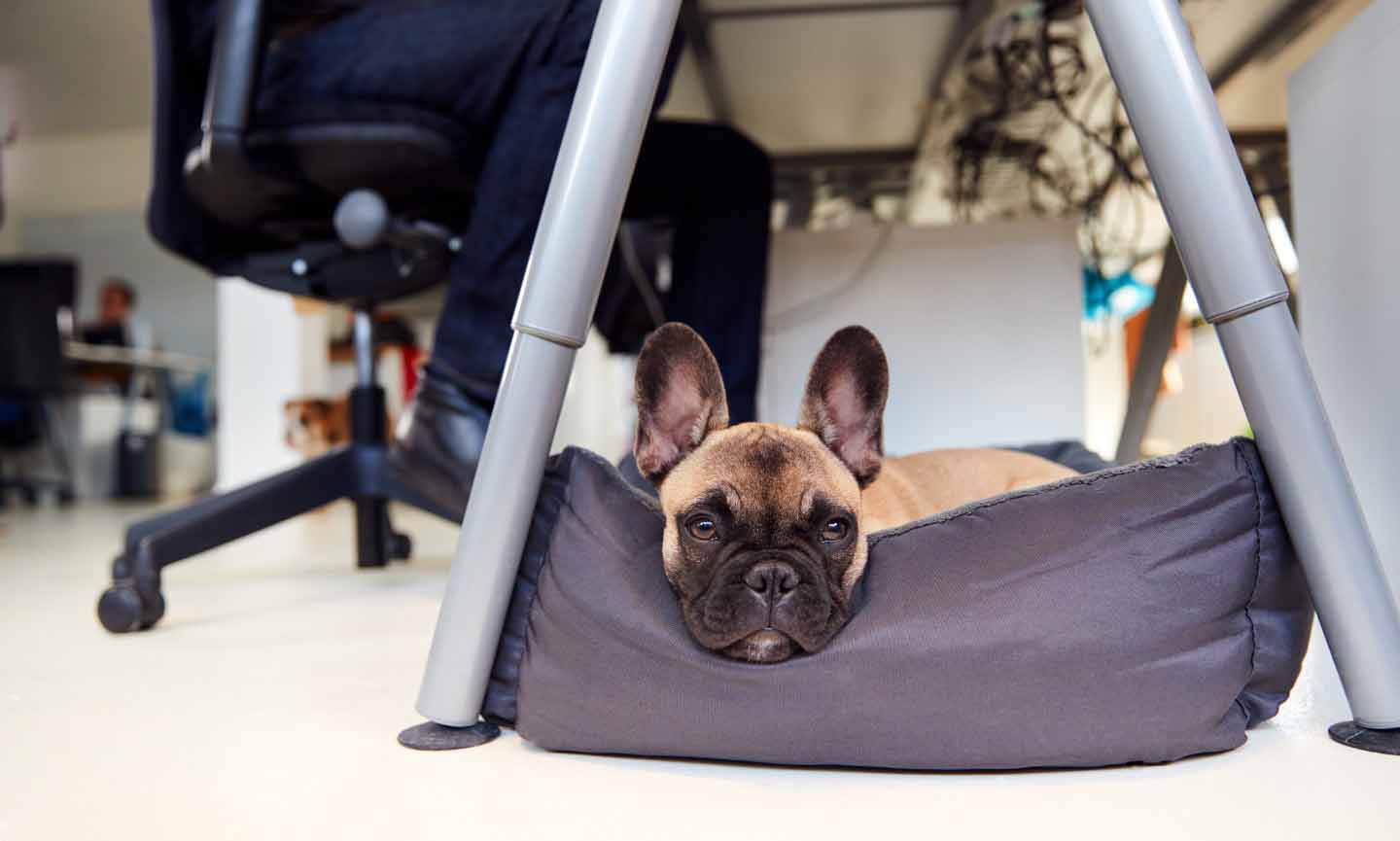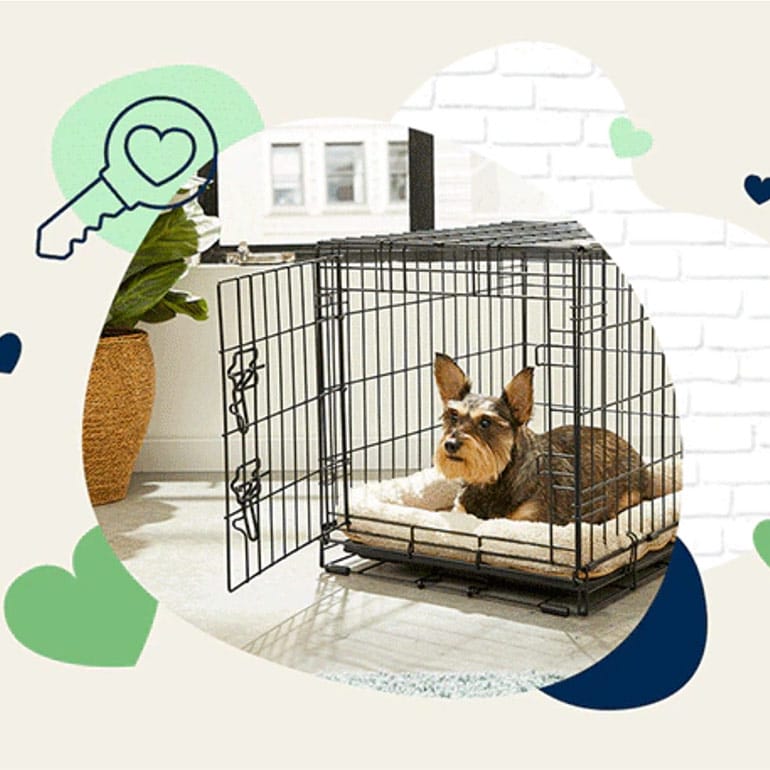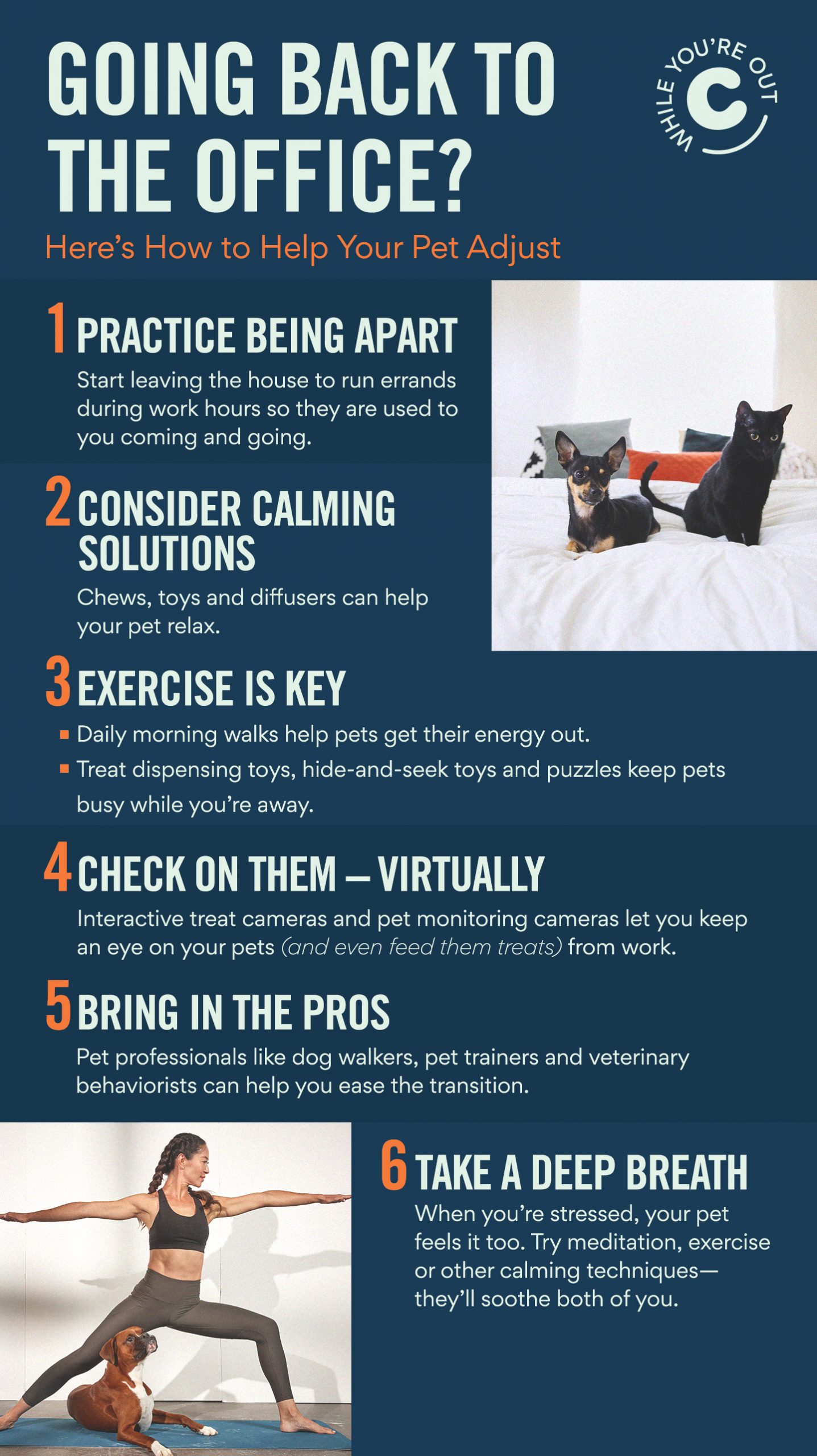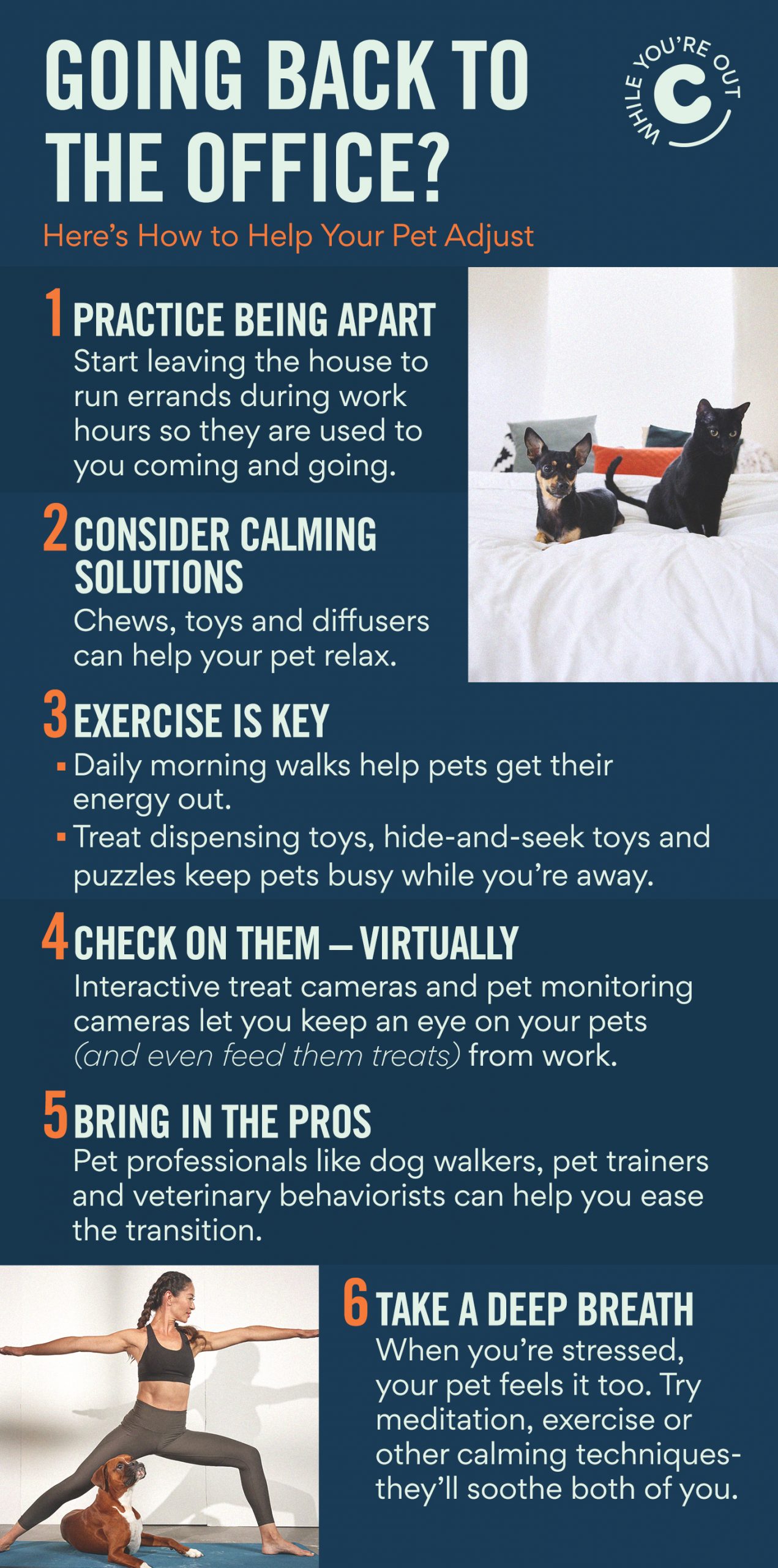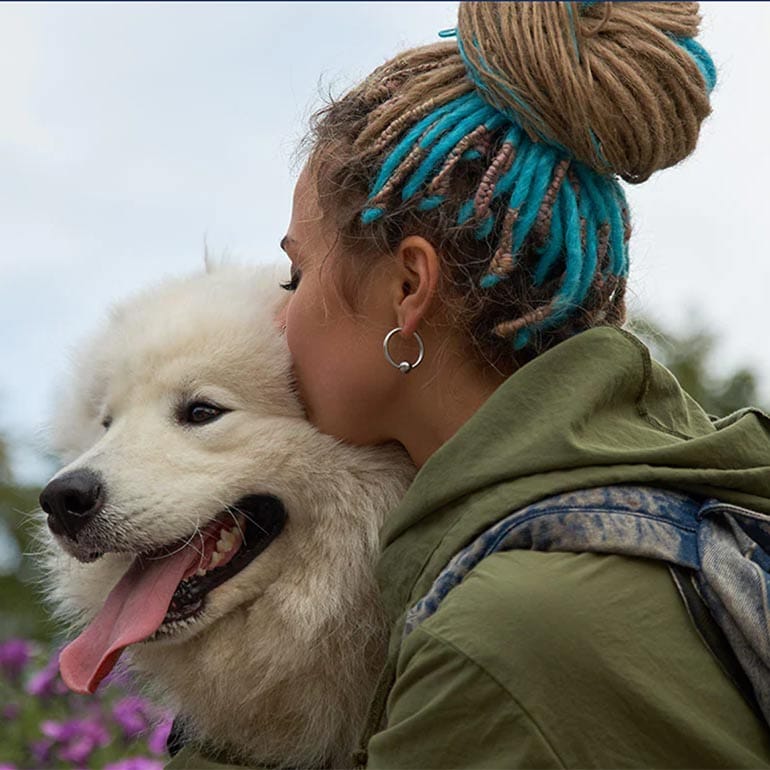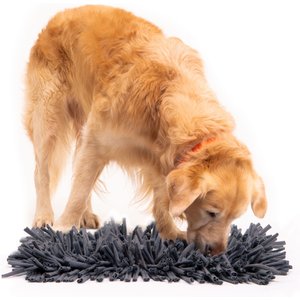Across the country, workers are returning to their offices and other in-person workplaces—and many pet parents are wondering if they can bring their dog to work, too. Studies have shown there are many benefits to having dogs at work, like improved morale and job satisfaction.
Bringing your dog to work can help keep you both happy and healthy, but there’s more to it than showing up with your pup in tow. From your pet’s level of training to their attitude toward strangers to your workplace’s office policies, there’s a lot to consider. Let’s get you off to a great start.
After a year spent mostly at home with their furry friends, an increasing number of pet parents are looking for ways to stay close to their dogs when they return to work. And no wonder! Jeff Skalka, founder and CEO of Connected Canine, a business that helps companies establish and manage dog-friendly workplaces, says that having dogs at work can not only help boost individual employee morale and satisfaction but also strengthen office community. “It’s an opportunity to bring together people in the office to form stronger bonds over their pets who they love,” he says.
And wait, there’s more. According to studies conducted by the Human Animal Bond Research Institute (HABRI) and Banfield Pet Hospital, dogs at work can also result in:
- Lower employee stress levels
- Improved social support
- Increased social interactions among coworkers
- Improved employee morale, job satisfaction and performance
- Increased employee retention
- Reduced absenteeism
Here at Chewy, we know that bringing your dog to work isn’t just a fun addition to the office—it can actually help you and your colleagues to feel fulfilled in your careers. That's why team members are welcome to bring their dogs to work (as long as they meet a few requirements like ID tags and necessary vaccinations). On top of all the benefits above, having a furry friend at our feet is a great reminder of why we work so hard to support pets and their people!
Back to Work: By the Numbers
90%
The percentage of employees in pet-friendly workplaces who are willing to recommend their employer to others.
6 in 10
The number of pet parents who have previously left a job because it did not allow them to bring their pet to work.
7 in 10
The number of pet parents who say they'd accept lower pay to land a pet-friendly job.
How do you know if your dog is cut out for the 9 to 5? Dog trainer and owner of WagWag Enterprises, Lisa Sickles, CDBC CPDT-KA, says to ask yourself these questions before bringing your dog to work:
- Can your dog be mellow and quiet for hours at a time? If your dog has any fear, aggression or anxiety issues, or if they are overly exuberant or high energy, an office environment might not be a good fit for them.
- Is your dog potty trained in new areas? Many workplace pet policies require potty training for office dogs—and even if they don’t, you still don’t want your pup leaving messes around your desk (or your coworkers).
- Is your dog well-trained and well-behaved around other people and dogs? Office life brings lots of new introductions, so your dog should be comfortable meeting new people and dogs without jumping, barking or getting too excited.
- Will you be able to take the necessary breaks during the day to take care of your dog? You will need to take your dog out for a walk or bathroom break every couple of hours. Be realistic about whether or not your work schedule will accommodate this.
1 Research Your Employer’s Pet Policy
Check with your boss regarding their policies on pets at work and make sure you understand all the rules. Not all dog-friendly workplaces will allow your dog in all locations in the office, and others may have other specific rules about how many pets can be at work on any given day. “[Employers] don’t want 100 dogs showing up if they only have space for 50,” Skalka says.
If your employer doesn’t currently have any pet-friendly policies in place, consider presenting the business benefits of having a dog-friendly workplace to your employer. You can approach your HR team, or an executive manager who’s also a dog-lover, who could help you advocate. Remember to consider your employer’s goals, and make your case based on how dogs at work can help you meet those goals.
2 Connect With Your Coworkers
To keep your office relationships strong, make sure to talk to your colleagues about bringing your dog to work before you actually show up with your pup. Find out if your immediate coworkers have allergies, fears or other concerns about bringing dogs to work. Also, ask your colleagues who are fellow pet parents about their dogs and when they plan to bring them into the office. This info can help you make a plan for a dog-friendly office that works for everyone.
3 Check In With Your Vet
You shouldn’t go into the office if you’re under the weather, and neither should your dog. So schedule a checkup with your vet to make sure your dog is healthy and up to date on all their shots. Your employer may ask for proof of vaccinations, so keep these records handy. Talk to your veterinarian if you have any questions or concerns about bringing your dog to work.
4 Gather Your Gear
From bowls to toys and treats, there are lots of essentials you’ll need to pack in your dog’s “briefcase.” (Here’s the full list.)
5 Dog-Proof Your Workspace
Computer wires, toxic chemicals and food storage areas that are low to the ground are all potential hazards for your dog. So go ahead, get down on your hands and knees and see your office from your pup’s point of view—then remove or limit their access to anything that could get them into trouble.
6Bone Up on Training
Make sure your pup is reliable with their basic commands. (Don’t stress—we’re walking you through our top training tips below.) If not, consider working with a certified dog trainer until you are confident in your dog. Remember: This training should be done at home—you won’t have time (or, in all likelihood, your boss’s approval) to do it at the office.
7Ease Your Dog Into Your Routine
Set a schedule to help your dog adapt to their new office environment. Sickles recommends a few hours per day at first, and not taking your dog into the office multiple days in a row. Depending on your dog, it might take a few months for them to work up to being in the office full-time with you—and certain dogs might be happiest with just an occasional day in the office.
True or False?
A pet friendly office may require their employee to carry their own liability insurance to cover their pet.
True.
Your employer may require you to carry liability insurance to cover damages in the event that your dog destroys property or causes harm to another employee or dog. You may already be covered by your homeowner’s or renter’s insurance for this type of liability, so check your current coverage.
Training Tips for Dogs at Work
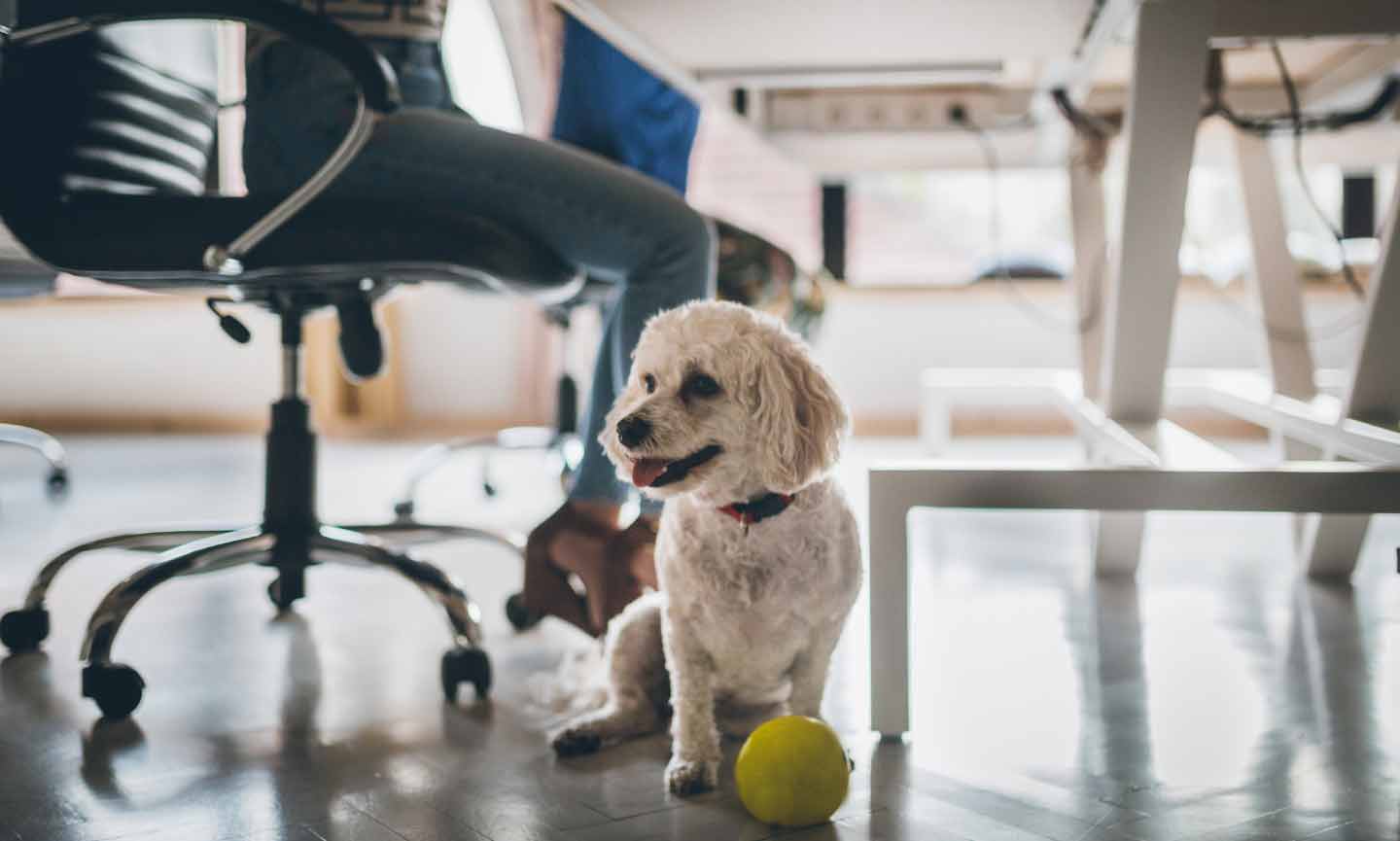
According to Sickles, before bringing your dog to work, make sure your dog reliably responds to the following commands:
- The basics: sit, stay and come
- “Go to [insert desired place]”: A command that tells your dog to go and quietly stay on their bed or mat
- “Leave it”: A command that’ll come in handy if, say, a box of donuts gets knocked over in their general vicinity
Other important tips:
- If you need to leave your dog behind in your office, they should be trained to do so without barking, whining or getting into trouble. Having your dog crate trained or being able to put up a dog gate to give them a comfortable space to hang out will be important.
- Whether you’re near or far, an interactive or treat-dispensing toy like a stuffed, frozen KONG is a good option to keep your dog entertained. That way, while you’re hard at work, they’ve got something soothing and stimulating to work on as well.
Returning to Work Without Your Dog

When it comes to your dog’s anxiety, don’t be shy about enlisting the help of professionals. Work with your trainer and veterinarian to come up with the right combination of strategies to keep your dog happy and healthy if they need to stay home on their own.
Like this story? Check out more of our favorite reads:
Share:
